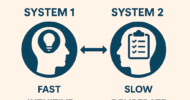An excerpt from Breath Taking: The Power, Fragility, and Future of Our Extraordinary Lungs. Reprinted with the permission of the publisher, Atlantic Monthly Press, an imprint of Grove Atlantic, Inc. All rights reserved.
Eduardo Rosas Cruz was arrested late in the evening near Bakersfield, California, on July 28, 2014. He didn’t assault anybody, didn’t steal anything, and wasn’t driving under the influence He wasn’t trespassing or jaywalking. In fact, he got arrested for something even the best-intentioned and hardest-working of us often forget to do: he didn’t take his medications.
This arrest would appear to violate the medicolegal principle that a person of sound mind has the right to refuse any treatment or medication. But the case of Rosas Cruz was not typical. His lungs were infected with tuberculosis, and with the communal nature of our atmosphere, the state of California was within its legal rights to imprison him. The prosecutor, Stephen Taylor of San Joaquin county, put it succinctly: “Criminal prosecutions (can be) an extension of the practice of medicine.”
The arrest of Rosas Cruz represents a rare intersection of crime and medicine. It is an extreme example, but it serves to demonstrate how the lungs exist at the juncture between our communal air, deadly infections, and our rights as citizens. Today, the intersection of these three issues is becoming more fraught. With growing urbanization, extreme mobility, and a plethora of new bacteria and viruses emerging, lung health serves as a bellwether for what is happening in society worldwide. The 2019-2020 emergence of the novel severe acute respiratory syndrome coronavirus 2 (SARS-CoV-2, commonly known as COVID-19)—with the extraordinary subsequent shutdown of daily life, closed borders, and overwhelmed medical systems—is the perfect example of how a lung infection can take over society in a very short period of time.
The connectivity of our air can be hard to conceptualize. We can easily imagine the oceans as being connected: when a shipping container dumped thousands of Legos off the coast of Cornwall, England, in 1997, we were not surprised that some pieces were later recovered in Ireland, Galveston, Texas, and Melbourne, Australia. We can see the ocean currents. However, the air of our atmosphere, while invisible and intangible, is no less connected than our oceans. This is true at the local level, where infections can spread easily from lung to lung, but also at much greater distances. A recent study has shown the trees in Yosemite National Park are reliant on nutrients from the dust in China’s Gobi Desert that have caught a ride on the east-west jet stream, traveling some six thousand miles. Similarly, the Amazon relies on the dust of the Sahara Desert in Africa, which travels in the opposite direction but just as far.
For humanity, the world that is our atmosphere has gotten smaller, more communal. The unseen air that is becoming increasingly more collective is something that needs to be respected, and the threats to it must be addressed at local, national, and international levels. No other organ teaches us this lesson better than the lungs, and no other diseases better than tuberculosis and COVID-19.
In November 2005, during my first year of pulmonary fellowship, I fielded a call about a sick patient who was on the general medical floor. He was twenty-two years old, a college kid who had come in with a fever and what looked like pneumonia, but he wasn’t responding to typical antibiotics. At night his fever spiked upward of 103 degrees Fahrenheit, and sweat poured out of him, saturating his bed linens. He had lost a great deal of weight, and his chest X-rays showed more inflammation every day.
We had no idea about a diagnosis, so we took him to the surgical suite, sedated him, and inserted a camera into his lungs, taking some small biopsies, tiny pieces of lung tissue, in the hope of finding a diagnosis. In retrospect, it is clear that the answer was right in his history, as almost all diagnoses in medicine are.
We learned that our patient had done something over the summer that thousands of young adults throughout the country had done—he had gone to an outdoor rock concert, this one with almost one hundred thousand people, all sharing the same cloud of air. Music festivals are among the most likely venues for infectious diseases to do their work: a lot of people from all over the world coming together into a tight space with variable sanitation facilities. Some cities, especially a hundred years or more ago, could also be described in this manner.
We did our bronchoscopy, got our tissue, and soon thereafter had our diagnosis: the young man had tuberculosis, and a lot of it. After his diagnosis, the patient was kept isolated in his room so he couldn’t inadvertently spread his bacteria, and per protocol and law we reported the disease to the Philadelphia public health department. Everything seemed to go smoothly; our young patient started his medications, his fever went away, and his cough got better. He was sent home, and every week he picked up his pills at a city-run clinic. He seemed reliable, and stated to the outpatient clinic that he was taking all his medications without an issue.
At home, however, the patient’s fever came back, as did his cough and shortness of breath. He came to the emergency room, where his breathing was found to be so bad, he ended up with a tube down his throat and on a ventilator, and was admitted to the ICU. Once we stabilized him, everybody involved tried to figure out what had happened to someone who had taken his medications and seemed on the road to recovery.
We got a CT scan (a more detailed X-ray), which showed that the inflammation in his chest had increased—after a month of treatment. Even worse, when we did another bronchoscopy, we saw that he still had TB organisms actively growing in his lungs.
We followed up with the health department about his bacterium to make sure it was susceptible to the antibiotics we were giving him. The health department in every state not only records every case of TB, but also reviews drug sensitivities (how well a strain of bacteria responds to medications). We were assured his strain of tuberculosis was sensitive, and that our patient had been taking his medications. We then checked him for basic immune deficiencies and again nothing turned up.
With the obvious accounted for, we turned to the obscure, the area of medicine where judgment and experience come into play. Fortunately, we received sound advice and guidance from the infectious disease physicians. Stick to the basics, they stressed, only do them better. We continued our patient on the first-line anti-TB drugs he had been on, this time at a slightly higher dose, and added one dose intravenously since he had inflammation in his abdomen and likely wasn’t absorbing a lot of the medicine he had been taking. We supported his immune system with appropriate calories through a feeding tube and kept the pressure in his lungs low on the ventilator. In this case, there could have been an urge to change the plan radically, to alter the anti-TB drugs or give steroids or other immune modulators. The art of medicine is knowing when to give up and start anew versus when to stay with the basic plan, executed better. In this case, we stuck with the basic plan.
Gradually, the inflammation in the chest and abdomen calmed down. We were able to give the patient physical therapy, and he got off the ventilator and went to the general medical floor. We stuck to the basics of antibiotics and nutrition, and he did well. When in doubt in medicine, stick to the basics are indeed words to live by.
Michael J. Stephen is a pulmonary physician and author of Breath Taking: The Power, Fragility, and Future of Our Extraordinary Lungs.
Image credit: Shutterstock.com































![Rethinking medical education for a technology-driven era in health care [PODCAST]](https://kevinmd.com/wp-content/uploads/The-Podcast-by-KevinMD-WideScreen-3000-px-4-190x100.jpg)

